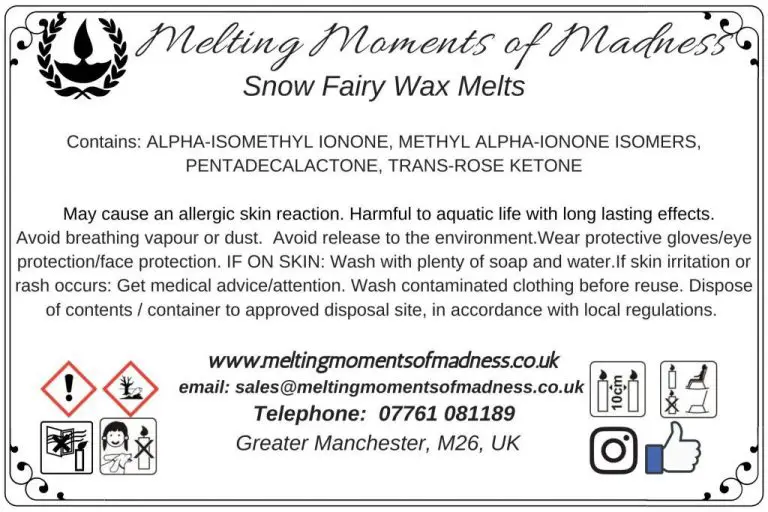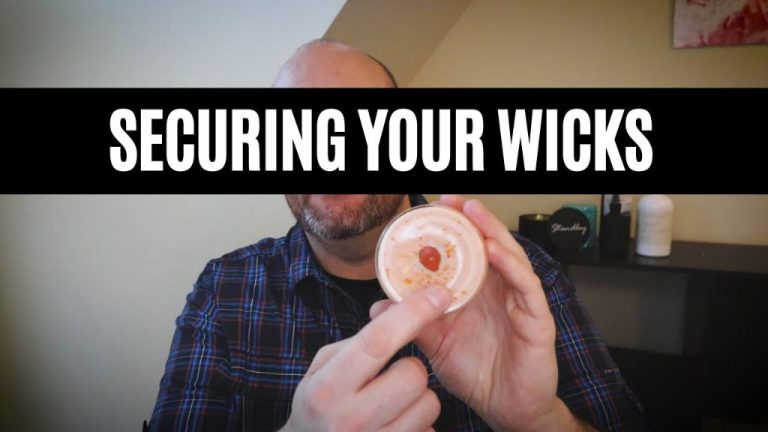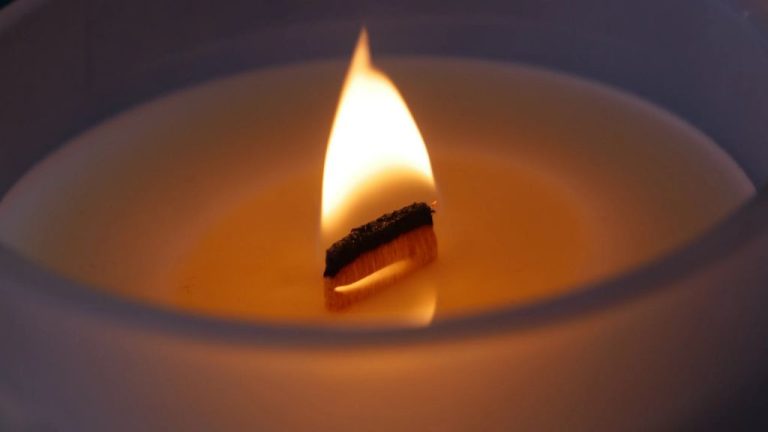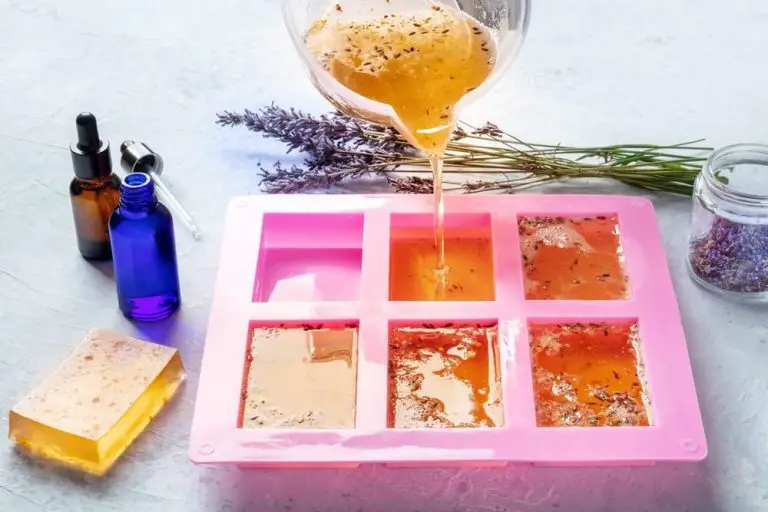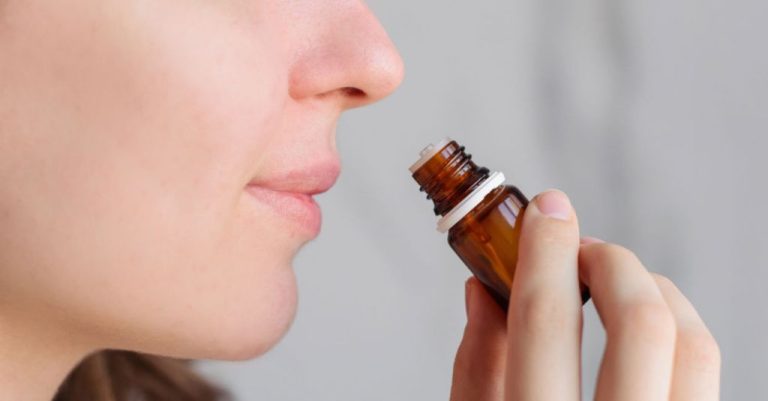How Do You Make Candles With Paraffin Wax?
Candlemaking has a long history dating back thousands of years. Originally, candles were made from tallow (beef or mutton fat) or beeswax. The use of paraffin wax revolutionized candlemaking in the mid-1800s. Paraffin wax is a petroleum byproduct that is odorless, colorless, and burns cleanly. It provided a cheaper alternative to beeswax and tallow candles. The first paraffin wax was created in 1830 by German chemist Carl Reichenbach.[1] In 1850, James Young figured out how to efficiently separate paraffin wax from petroleum and manufacture it on an industrial scale.[2] This allowed paraffin wax candles to become widely available and affordable.
The basic candlemaking process with paraffin wax involves preparing the wax, preparing the wick, adding scents and dyes as desired, pouring the wax into molds or containers, allowing time to cool and cure, then removing the finished candles from the molds. Proper safety precautions, equipment, and techniques are needed to make quality paraffin candles successfully at home.
Safety Precautions
When working with hot wax, there are some important safety precautions to take:
- Ensure proper ventilation – work in a well-ventilated area to avoid inhaling wax fumes (Cite1).
- Use appropriate pots – use a pot specifically designed for candle making rather than household pots to avoid wax sticking (Cite1). Do not fill pots more than halfway to prevent boil overs.
- Protect yourself – wear shoes and long pants to avoid burns. Tie back long hair (Cite2).
- Supervise children – do not leave melting wax unattended, keep children and pets away.
- Have a fire extinguisher on hand in case of emergencies.
Always use extreme caution when working with hot wax to avoid burns or other injuries.
Supplies Needed
The main supply needed for making paraffin candles is paraffin wax. Paraffin wax comes in slab form and can be purchased from candle making suppliers like Candle Wic. Be sure to get wax with a melting point between 130-150°F.
You’ll also need candle wicks, which are specially designed to burn inside wax. Popular wick options include zinc core, cotton, and paper cored wicks. The width of the wick should match the diameter of your candle mold. Wicks can be found at craft stores or websites like The Flaming Candle.
Metal or silicone molds shape the wax into candles. The mold size determines the finished candle size. Popular options are votives, pillars, tapers, and jars. Be sure to get molds designed for paraffin wax. Candle making suppliers like Candle Making Supplies offer a wide selection.
A double boiler gently heats the wax to the proper temperature for pouring. You can purchase one, or make your own by placing a heat-safe pot inside a pan of water. Use a thermometer to monitor the melted wax temperature.
Scent and dye oils are popular add-ins. Use a small amount, usually 1-2% of the wax weight. Candle dye comes in liquid or block form. Essential oils or fragrance oils add pleasing aromas.
Preparing the Wax
Before melting, make sure all equipment is clean and free of water to prevent spattering. Use a double boiler or old crockpot to melt the wax. Heat the wax slowly at low heat to avoid scorching. The wax is ready when it reaches 150-165°F as measured on a candy thermometer. Do not let the wax go above 185°F (Paraffin Wax Processing).
Pour the melted wax into metal, silicon or plastic molds. Avoid glass as it can shatter when the hot wax is poured in. Let the wax cool undisturbed until a film forms over the top, then place the molds in the refrigerator for 30-60 mins until completely hardened. Allowing the wax to cool slowly in the mold will result in fewer air bubbles and defects (Method for the preparation of paraffin waxes and use).
Once hardened, pop the wax out of the molds. The wax blocks are now ready to be melted again when making candles.
Wick Preparation
Choosing the right wick size is crucial for proper candle burning. The wick must be wide enough to support the width of the candle without bending, but not so wide that it drowns in wax. Use wick charts from suppliers to determine the best width for your candle diameter. Common wick sizes are CD 5, 7, 10, 12, etc.1
Attach metal or paper wick tabs to the base of wicks to anchor them while pouring wax. This prevents wicks from floating. Wick stickers also help center wicks in the mold. Position wicks carefully in the middle before pouring for even burning.2
Adding Scent and Dye
Scent and dye can be added to candles to give them unique aromas and appearances. It is important to know when and how much to add to achieve optimal results.
Fragrance should be added after the wax is fully melted and the temperature has cooled slightly, between 180-185°F for soy and paraffin wax, or 200-205°F for palm wax, according to experts at Lonestar Candle Supply (https://lonestarcandlesupply.com/dos-and-donts-of-candle-making/). Adding fragrance at too high of a temperature will cause the scent molecules to burn off before they can bind properly with the wax.
A common recommendation is to use about 1⁄2 ounce of liquid fragrance oil or up to 1 ounce of block fragrance per pound of wax, according to Better Homes & Gardens (https://www.bhg.com/decorating/do-it-yourself/how-to-make-candles/). For stronger scents, slightly more can be used, but it’s important not to overdo it as too much fragrance can cause issues like weeping or blooming. Try adding fragrance in small increments until the desired aroma is achieved.
Liquid dyes can be added along with fragrance to achieve vibrant colors. Usually only a few drops are needed per pound of wax. As with scents, it’s best to add dye little by little until the preferred color intensity is reached.
Pouring the Wax
Properly heating the wax is crucial for achieving a smooth pour and quality finished candle. According to Carmel Industries [How to Make Paraffin Wax Candles at Home], paraffin wax should be heated to between 120-140°F (50-60°C) for pouring. Higher temperatures up to 180°F (82°C) can be used if adding dyes or scents. The wax should be heated slowly and stirred constantly to prevent overheating.
Once the wax is fully melted, remove it from the heat source. Carefully pour the wax into the candle mold, being sure to pour in the center and not directly on the sides. This helps prevent air bubbles. Pour to within 1/4 inch of the top of the mold to allow room for the final wick straightening.
Allow the candle to cool undisturbed until a skin forms on the top and it’s no longer liquid in the center, about 4 hours. This helps prevent sinkholes on the finished candle. Do not pour candles in a draft or cold area, as this can cause cracking or other defects.
Cooling and Curing
After the candles have been poured and set up, it is important to let them cure before burning. Curing allows the wax to finish contracting and stabilize, ensuring an even burn when the candle is lit. According to Armatage Candle Company, the general rule for curing soy wax candles is 1-2 weeks to allow the wax to fully set up (https://armatagecandlecompany.com/blog/candle-curing/).
During the curing process, some sinks and divots may appear on the surface as the wax continues to shrink and settle. These are normal and can be smoothed over with a heat gun once curing is complete. The curing time also allows any trapped air bubbles to rise to the surface. Late Harvest Candle Co. recommends allowing a full 2 week cure time before lighting to ensure proper wax adhesion and an even burn (http://www.lateharvestcandleco.com/importance-of-curing.html).
Resist the temptation to light or test the candles too soon. Allowing the full curing time will result in better performance and help the wax fully adhere to the wick. This helps prevent tunneling and ensures your homemade candles burn evenly from edge to edge.
Unmolding Finished Candles
Once the candle wax has fully set and cooled, it’s time to remove it from the mold. This process requires patience and care to avoid damaging the candle.
For silicone molds, first gently flex the mold to loosen the candle from the sides. Then turn the mold upside down and lightly tap the bottom. The tapping motion helps dislodge the candle from the mold. Slowly peel back the mold from bottom to top until the candle pops out. Avoid pulling too hard or twisting the mold, as this can warp the candle’s shape.
With plastic molds, place the mold in the freezer for 1-2 hours before unmolding. The cold temperature helps shrink the candle ever so slightly from the mold walls. After freezing, invert the mold and gently remove the candle, taking care not to bend or warp the plastic. You can also try tapping the bottom or sides of the mold.
For removing candles from glass, be patient and go slowly to avoid breaking the glass. After cooling completely, turn the glass upside down and lightly wiggle the candle to loosen it. Place one hand securely over the top opening, then tap the glass against a solid surface to gently coax out the candle.
Once unmolded, carefully trim the wick to 1⁄4 inch using wick trimmers or small scissors. This helps prevent smoke and gives a nice even burn. Now the candle is ready to enjoy!
Source: https://www.wikihow.com/Remove-a-Candle-from-a-Mold
Troubleshooting
Even with careful preparation, candle making can sometimes lead to issues like wet spots, cracking, or unwanted discoloration. Here are some common troubleshooting tips:
If you notice wet spots or oil slicks on the top of your candle, the fragrance oil may not have fully incorporated with the wax. Try using less fragrance oil next time, between 5-8% of wax by weight, and make sure to stir thoroughly after adding. Rapid temperature changes can also cause wet spots, so avoid quick cooling. [1]
Cracking or frosting on the candle surface is often caused by pouring the wax at too high of a temperature or cooling the candle too quickly. Pour wax around 150-165°F to avoid cracks, and allow candles to cool slowly. Cracks can potentially be fixed by warming the surface with a heat gun and massaging gently. [2]
Scent fading or not throwing can happen if too little fragrance oil gets added. Use the maximum recommended amount for that particular oil. Also ensure proper wick size, as larger wicks will release more scent. Consider using two wicks in larger candles to prevent scent tunneling through the center. [1]
Discoloration over time is common in soy candles especially. Some remedies include adding uv inhibitors to the wax or avoiding excessive wick trimming which leads to very high burn temperatures. Testing wick and fragrance combinations ahead of time can prevent unwanted color changes. [2]

